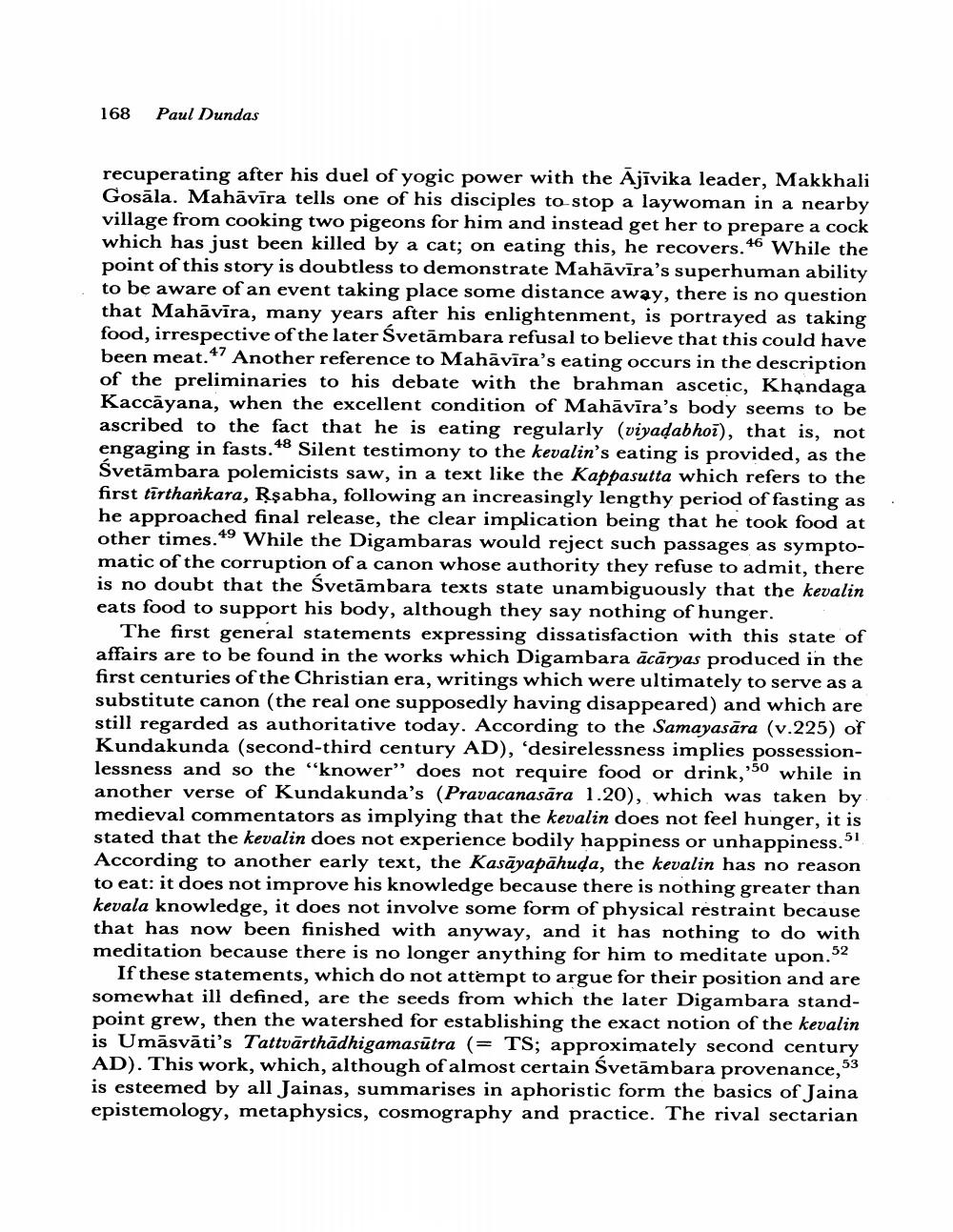Book Title: Food And Freedom Author(s): Paul Dundas Publisher: Paul Dundas View full book textPage 8
________________ 168 Paul Dundas recuperating after his duel of yogic power with the Ajivika leader, Makkhali Gosāla. Mahāvīra tells one of his disciples to stop a laywoman in a nearby village from cooking two pigeons for him and instead get her to prepare a cock which has just been killed by a cat; on eating this, he recovers. 46 While the point of this story is doubtless to demonstrate Mahāvīra's superhuman ability to be aware of an event taking place some distance away, there is no question that Mahāvīra, many years after his enlightenment, is portrayed as taking food, irrespective of the later Svetāmbara refusal to believe that this could have been meat.47 Another reference to Mahāvīra's eating occurs in the description of the preliminaries to his debate with the brahman ascetic, Khandaga Kaccāyana, when the excellent condition of Mahāvīra's body seems to be ascribed to the fact that he is eating regularly (viyadabhoi), that is, not engaging in fasts. 48 Silent testimony to the kevalin's eating is provided, as the Svetāmbara polemicists saw, in a text like the Kappasutta which refers to the first tirthankara, Rşabha, following an increasingly lengthy period of fasting as he approached final release, the clear implication being that he took food at other times.49 While the Digambaras would reject such passages as symptomatic of the corruption of a canon whose authority they refuse to admit, there is no doubt that the Svetāmbara texts state unambiguously that the kevalin eats food to support his body, although they say nothing of hunger. The first general statements expressing dissatisfaction with this state of affairs are to be found in the works which Digambara ācāryas produced in the first centuries of the Christian era, writings which were ultimately to serve as a substitute canon (the real one supposedly having disappeared) and which are still regarded as authoritative today. According to the Samayasāra (v.225) of Kundakunda (second-third century AD), desirelessness implies possessionlessness and so the “knower” does not require food or drink,'50 while in another verse of Kundakunda's (Pravacanasāra 1.20), which was taken by medieval commentators as implying that the kevalin does not feel hunger, it is stated that the kevalin does not experience bodily happiness or unhappiness.51 According to another early text, the Kasāyapāhuda, the kevalin has no reason to eat: it does not improve his knowledge because there is nothing greater than kevala knowledge, it does not involve some form of physical restraint because that has now been finished with anyway, and it has nothing to do with meditation because there is no longer anything for him to meditate upon.52 If these statements, which do not attempt to argue for their position and are somewhat ill defined, are the seeds from which the later Digambara standpoint grew, then the watershed for establishing the exact notion of the kevalin is Umāsvāti's Tattvārthādhigamasutra (= TS; approximately second century AD). This work, which, although of almost certain Svetāmbara provenance, 53 is esteemed by all Jainas, summarises in aphoristic form the basics of Jaina epistemology, metaphysics, cosmography and practice. The rival sectarianPage Navigation
1 ... 6 7 8 9 10 11 12 13 14 15 16 17 18 19 20 21 22 23 24 25 26 27 28 29 30 31 32 33 34 35 36 37
